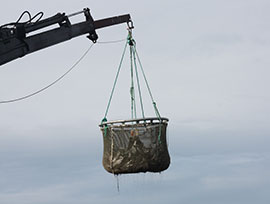Fish welfare at risk due to poor routines

Maintaining good animal welfare for fish is a major challenge within aquaculture. One threat against fish welfare is poorly adapted routines that increase the risk of causing unnecessary and potentially detrimental stress in the animals. In the present study we assessed how the stress levels of European whitefish (Coregonus lavaretus) was affected by routines before and during the slaughter process.
The sensitivity to different stressors differ among fish species. It is therefore necessary to design species-specific routines. Using measurements of stress hormones and implanted heart rate loggers, we investigated how whitefish reacted to different events throughout the whole slaughter process. Increased heart rate indicates a stress increase.
Our results show that the fish became stressed when they were crowded before transport to slaughter and that they were continuously stressed during the transport. Stress levels remained high even after 12 hours of recovery, after which the next steps (crowding, netting, air exposure and stunning) contributed to additional stress before killing. The results clearly show that the routines at slaughter needs to be adapted to improve fish welfare and reduce stress for farmed whitefish.
Reference
Hjelmstedt P, Brijs J, Berg C, Axelsson M, Sandblom E, Roques JAC, Sundh H, Sundell K, Kiessling A, Gräns A. 2021. Continuous physiological welfare evaluation of European whitefish (Coregonus lavaretus) during common aquaculture practices leading up to slaughter. Aquaculture 534, Article 736258
Links to the article
https://doi.org/10.1016/j.aquaculture.2020.736258
https://www.sciencedirect.com/science/article/pii/S0044848620339648?dgcid=rss_sd_all